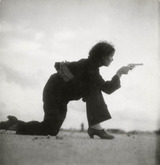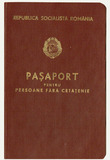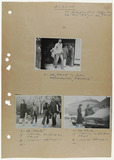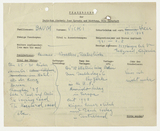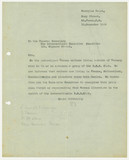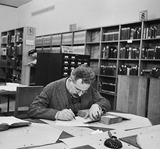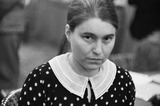Gerda Taro: Ernst Busch, Erich Weinert and other participants at the Second International Writers’ Congress in Defence of Culture in Valencia (1937)
Already before her emigration, the photographer Gerda Taro had made contact with socialist groups in Germany and had started to become politically active. She continued her commitment to politics after she went into exile in Paris and decided, together with her partner, the photographer Robert Capa, to document the Spanish Civil War on the Republican side.
Gerda Taro: Republican militiawoman training on the beach outside Barcelona, photograph, 1936
For a long time the photographer Gerda Taro was simply thought of as the beautiful lover of the great photographer and war correspondent Robert Capa – unfairly, as we know now thanks to many years of intensive research. The spectacular rediscovery in 2007 of a cardboard box containing 126 rolls of film, which has become known as the “Mexican Suitcase”, confirmed Taro’s skills as a photographer in an impressive fashion.
Gerhard Ortinau's passport for stateless persons (1980)
The writer Gerhard Ortinau received this passport for stateless persons on 19 January 1980 when he emigrated from Romania to Germany. Its validity expired the same year.
Gerhard Ortinau’s Securitate file
Surveillance photos from the year 1979The public authority Consiliul Național pentru Studierea Arhivelor Securității (CNSAS), which was established in 1999 and had the job until 2013 of looking into the surveillance activities of the Rumanian secret service Securitate, which operated from 1948 to 1990, provided surveillance victims with access to their files. The writer Gerhard Ortinau made use of this opportunity and requested to see his file.
German Academy for Language and Literature: questionnaire for Vicki Baum
In the mid-1950s, the Deutsche Akademie für Sprache und Dichtung [German Academy for Language and Literature] commissioned Germanist Wilhelm Sternfeld and librarian Eva Tiedemann to compile a biographical bibliography of German-language exile literature. They accordingly sent out a questionnaire to collect information about the biographies and literary output of exiled authors, about many of whom only a little was known at this time.
German PEN in Exile: Letter to the International Executive Committee, 15 December 1933
“representing free German literature”After German PEN had realigned itself to the ideology of the Nazi regime and resigned from the international association in November 1933, German-language writers in exile joined forces to set up a new German PEN Club in exile. The founding members Lion Feuchtwanger, Ernst Toller, Rudolf Olden and Max Hermann-Neisse wrote this letter to the international PEN Committee informing it of their intention and explaining that they saw themselves as representatives of free German literature.
Gina Kaus: “Katharina die Große“ (Catherine the Great) (1935)
Gina Kaus‘ biographical novel “Katharina die Große“ (Catherine the Great) was published in 1935 by the Amsterdam-based publishing company Allert de Lange, which had previously published Kaus’ “Die Schwestern Kleh” (The Kleh Sisters) in 1933. The book’s design was provided by graphic designer Paul Urban.
Gina Kaus: Letter to William S. Schlamm (3 July 1940)
The defining topic of this letter from author Gina Kaus to publicist William S. Schlamm is the situation of relatives and mutual Austrian friends still living in France.
Gisèle Freund: Photographic portrait of Walter Benjamin (1937)
The philosopher and literature critic Walter Benjamin was not simply an occasional chess partner for the photographer and doctor of sociology Gisèle Freund; as German émigré Jews in exile in Paris, they also shared a common destiny. Benjamin, whom Freund had met and admired as a student in 1932 and with whom she developed a friendly relationship, wrote a positive review of her dissertation.
Gisèle Freund: Portrait photograph of Anna Seghers at the International Congress of Writers (1935)
The photographer Gisèle Freund had been invited to the First International Congress of Writers in Defence of Culture by the writer André Malraux. It was held in June 1935 in Paris, where she was living in exile.


